Top Stories
Michael Darling believes that graduate students should take control of their destinies and “make things happen rather than waiting for an opportunity to fall into their lap.” Throughout his life, this UCSB Art and Architectural History M.A. and Ph.D. alum has adhered to this philosophy, doing what he could to make himself stand out. And stand out he has. Dr. Darling, 47, is the James W. Alsdorf Chief Curator at the Museum of Contemporary Art in Chicago.
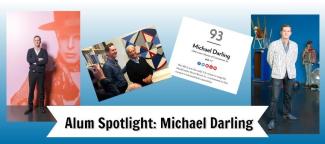
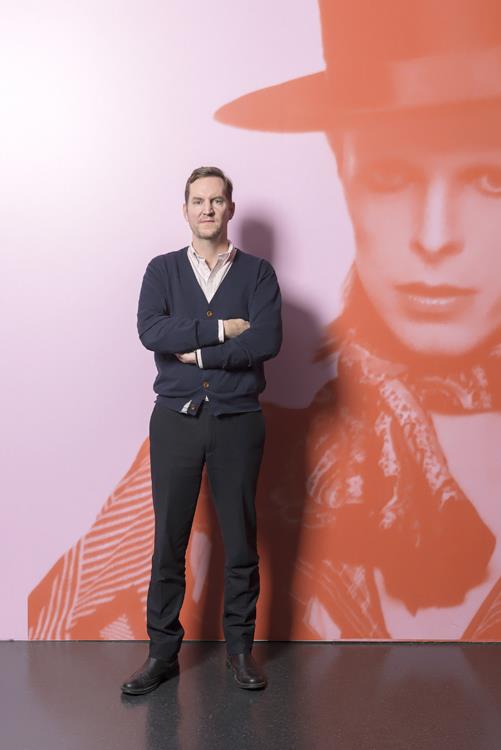 Michael Darling believes that graduate students should take control of their destinies and "make things happen rather than waiting for an opportunity to fall into their lap." Throughout his life, this Art and Architectural History M.A. (1992) and Ph.D. (1997) alumnus of UC Santa Barbara has adhered to this philosophy, doing what he could to make himself stand out.
Michael Darling believes that graduate students should take control of their destinies and "make things happen rather than waiting for an opportunity to fall into their lap." Throughout his life, this Art and Architectural History M.A. (1992) and Ph.D. (1997) alumnus of UC Santa Barbara has adhered to this philosophy, doing what he could to make himself stand out.
And stand out he has. Dr. Darling, 47, is the James W. Alsdorf Chief Curator at the Museum of Contemporary Art (MCA) in Chicago, a role he has held since July 2010. The Chicago Tribune listed him among "Chicagoans of the Year 2014," calling Darling a "rock star" for taking a gamble and securing the highly successful "David Bowie Is" exhibition for its only U.S. stop. Chicago magazine followed up in 2015, placing Darling at No. 93 on "The Power 100," its list of Chicagoans who have the most clout. "Snagging the blockbuster" Bowie retrospective, the magazine said, is "a testament to this curator's international reputation." Darling shared the Power 100 list with luminaries such as Chicago Mayor Rahm Emanuel and filmmaker/philanthropist George Lucas.
Far from the Windy City and his future rock star persona, Darling grew up in the Los Angeles County coastal city of Long Beach. Michael was artistically inclined but "never very talented from a technical standpoint," he said, and his "true epiphany" came in middle school when he came across Picasso and Kandinsky in a textbook. He and his parents and two younger brothers enjoyed water-based activities of all kinds, including boating, surfing, and water skiing; and Michael competed on his high school's water polo and swim teams. With relatives living in Santa Barbara and Santa Ynez, Michael and his family spent a lot of time in the Santa Barbara area even before he came to grad school at UCSB.
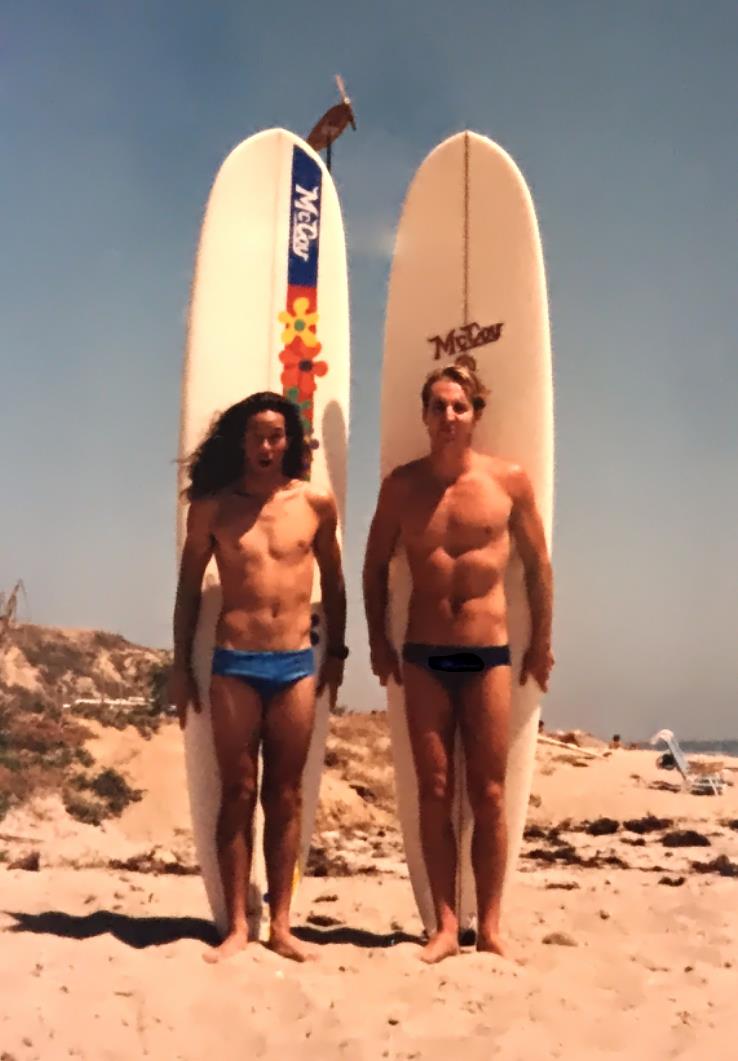 "Checking out the waves at Rincon on the way up was always a milestone on those road trips!" he recalled.
"Checking out the waves at Rincon on the way up was always a milestone on those road trips!" he recalled.
Stanford University, taking notice of his water polo talents, recruited him to play there. So Darling and three other close friends who were water polo and swimming standouts headed to Palo Alto for their undergraduate studies.
Darling earned his bachelor's degree in Art History from Stanford in 1990. He wanted to pursue a graduate degree, but didn't know exactly what area of art history to study.
"My interests were quite wide and varied," Darling recalled. "UCSB had one of the most diverse and large art history faculties around at that time, with professors teaching in many different disciplines, so that was attractive to me and even suggested by one of my art history advisors at Stanford. It was also the era of multiculturalism, so I was exploring and getting to understand that at the time as well, which made UCSB a good fit."
Darling's doctoral dissertation at UCSB was on the furniture of 20th century American designer George Nelson.
"I was going around to a lot of rummage sales and garage sales in Santa Barbara during those days, and discovering mid-century furniture (Montecito was a fabulous hunting ground for this material). ... At the time there was very little on George Nelson, who was a contemporary of Charles and Ray Eames. I felt I could fill a void in that area by writing on Nelson, and luckily I had two advisors, David Gebhard and C. Edson Armi, who did not feel that furniture design was an inferior art and that it was worthy of scholarly study."
Narrowing his research, Darling decided to "focus on the work that George Nelson did with domestic spaces, which coincided with a modernizing of the American home after World War II and was a pretty fascinating sociological period as well."
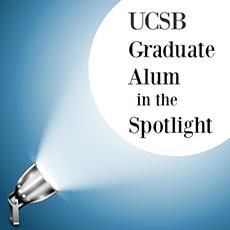 During the time of his graduate studies and shortly thereafter, Darling worked in many art-related roles: security guard at the Santa Barbara Museum of Art; researcher at the Museum of Contemporary Art (MOCA) in Los Angeles; and even an art critic, first for small art magazines, then for Santa Barbara publications, and eventually gaining his own columns in the L.A. Reader and L.A. Weekly.
During the time of his graduate studies and shortly thereafter, Darling worked in many art-related roles: security guard at the Santa Barbara Museum of Art; researcher at the Museum of Contemporary Art (MOCA) in Los Angeles; and even an art critic, first for small art magazines, then for Santa Barbara publications, and eventually gaining his own columns in the L.A. Reader and L.A. Weekly.
Darling said he loved critiquing art, one of his extracurricular activities while a grad student at UCSB. "As a critic with a byline, I felt like a full contributor to culture. I saw an ad in this little West Coast magazine called ArtWeek and I sent in a few of my grad school essays. After writing several columns there, I sent my tear sheets to the Santa Barbara Independent and magazines like Flash Art and Art Issues, and then things started taking off. It wasn't a lot of extra work. I was interested in exhibitions happening in Santa Barbara and L.A., and it was a way to engage with them. It was weird being a critic, and sometimes uncomfortable, and I even got hate mail, once getting mean posters put up all over Santa Barbara about me!"
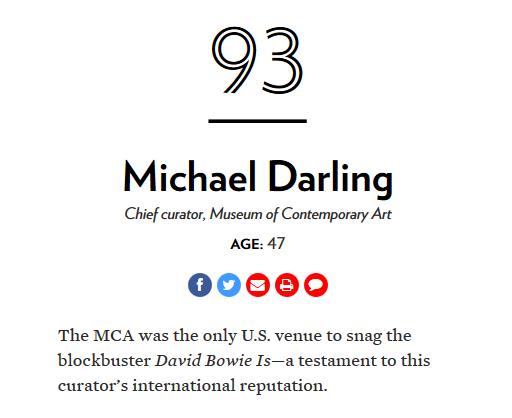 Darling ended up working for eight years at the Los Angeles Museum of Contemporary Art (MOCA), where he was Associate Curator. From that job, he moved to Seattle, where he served as the Jon and Mary Shirley Curator of Modern and Contemporary Art at the Seattle Art Museum (SAM) from 2006 to 2010, before heading to Chicago's MCA. He and his sons Max, 16, and Theo, 11, live in Evanston, Illinois.
Darling ended up working for eight years at the Los Angeles Museum of Contemporary Art (MOCA), where he was Associate Curator. From that job, he moved to Seattle, where he served as the Jon and Mary Shirley Curator of Modern and Contemporary Art at the Seattle Art Museum (SAM) from 2006 to 2010, before heading to Chicago's MCA. He and his sons Max, 16, and Theo, 11, live in Evanston, Illinois.
In an interview, we learned more about this multifaceted man. He talked about his appreciation for libraries; the importance of internships; what he likes most and least about his job; the value of a Ph.D.; and more.
What was graduate student life like for you at UCSB? What kind of a student were you here, and how did you manage a work-life balance while in grad school?
I was able to primarily concentrate on my studies during my time at UCSB, so I remember spending a lot of time in the library, which has really served me well in my subsequent career. It was a true luxury to work in a good art library where I could just pull books off the shelf at random and explore. That broadened my knowledge base a lot and I find that I have a wider frame of view on art than many of my peers because of this freedom. I have always been good, however, at maintaining a balance between work (or school) and my personal life and was able to find plenty of time to be with friends or be in nature or see movies during that period, which I did a lot. I also met my wife during my first few days of school at UCSB (she was also an art history grad student) so it was an important time for me personally too. I like to think I was a serious student, but I must say that I also always had one eye on life beyond school, so I was doing extracurricular things when I was in Santa Barbara such as writing art criticism. I was also curating independently at places like the Santa Barbara Contemporary Arts Forum [today the Museum of Contemporary Art Santa Barbara] and a little independent space in Santa Barbara called Spanish Box. I think I knew at the time that my degree was just one aspect of my professional development and I needed to work on other things at the same time if I wanted to find my way into a museum job.
What was your first job out of graduate school?
I got a job working as a security guard at the Santa Barbara Museum of Art after I finished my master's and before I started on my Ph.D. I wanted to make sure I knew what I wanted to concentrate on before I started so I could be focused. It was an important job for realizing the various layers to a museum, both from an organizational standpoint and from a visitor standpoint. Most guards in museums are very interesting and accomplished people but perhaps are working in creative fields where it is a way of putting food on the table and allowing them to pursue other less lucrative passions but still working in an artistic environment. But when I was really done with school, post-Ph.D., I got a job as a researcher at the Museum of Contemporary Art in L.A. I had wanted to work there since I was an undergrad and it was like the holy grail. I went against my personality type (at the time) and went up to a MOCA curator at an art opening and introduced myself and told her I admired her work. I think I asked if I could take her for coffee some time and learn more about how she was able to do what she did. That led to her offering me a part-time position, which grew and grew into an eight-year run at MOCA. That experience has led me to offer similar advice to other aspiring curators to approach the people they admire and ask for help or advice.
Before you graduated from Stanford, you did summer museum internships in Long Beach. It was there that you discovered the job of "curator," a job you hadn't known existed. What did you do in those internships, and would you recommend that grad students do them as a way to explore career options?
Yes, I think internships are important windows onto potential future job options. I did research and worked with artists and thought it was the best job in the world to think about art all day. I see internships here at the MCA leading to real jobs all the time, and in a way my research position at MOCA was just the same, a foot in the door and an opportunity to prove yourself.
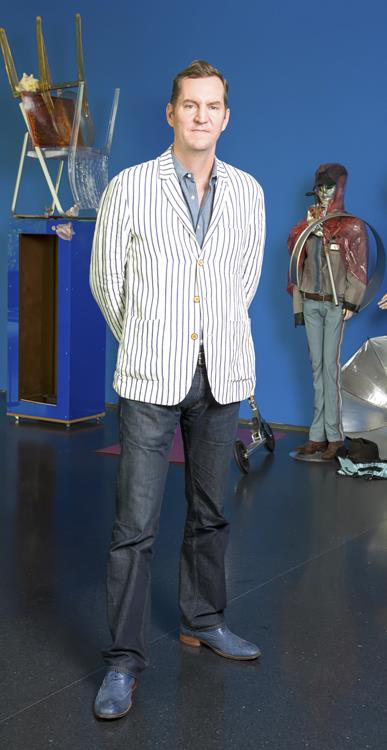 Describe your current job.
Describe your current job.
I am in charge of all programming at the museum, which ranges from exhibitions to talks and performances. Of course, I have amazing people working for me who help create these things and I don't do it all myself, but it is fun to have a hand in shaping the overall tenor of the program. I also oversee the growth of the museum's collection and personally curate exhibitions too. It involves a lot of coordination between departments and keeping on top of projects happening simultaneously, from logistics to visionary things and also fundraising to support the programs. It is an extremely busy job, but very rewarding too. I also travel a lot to see art all over the world, as I feel I am expected to be on top of all kinds of developments occurring all over. I try to keep a normal day to 9-5, but it is a pretty social position and there are often dinners and lectures and events I need to go to in a given week.
What exactly does a "museum curator" do?
The basic job is organizing exhibitions. But that also includes writing the books that go with them, writing grants that support them, asking for money from patrons to fund them, writing the interpretive materials that explain them, and doing interviews and tours that help to bring them to life.
What do you like most about your job and what do you like least?
I like the travel the most because I learn so much and find time to think more expansively, but I also like travel the least because I fall behind on email and miss my family and it can be quite lonely at times.
You grew up in California, moved to Seattle, and now live in the Chicago area. How important is it for students to be open and willing to move away for their career?
I think it is important to get different experiences and perspectives, both in an academic and a work environment. I know it has been really beneficial for me to consider how art works in such different contexts and also how different each of the museums I have worked in are. On the other hand, I do worry about the loss of depth of connections that results from moving around. I don't feel I got to know Seattle and its community as much as I did L.A. from only being there four years, and as a result, I don't think I was able to contribute as much as I would have liked.
Do you have any advice for graduate students while they are in school?
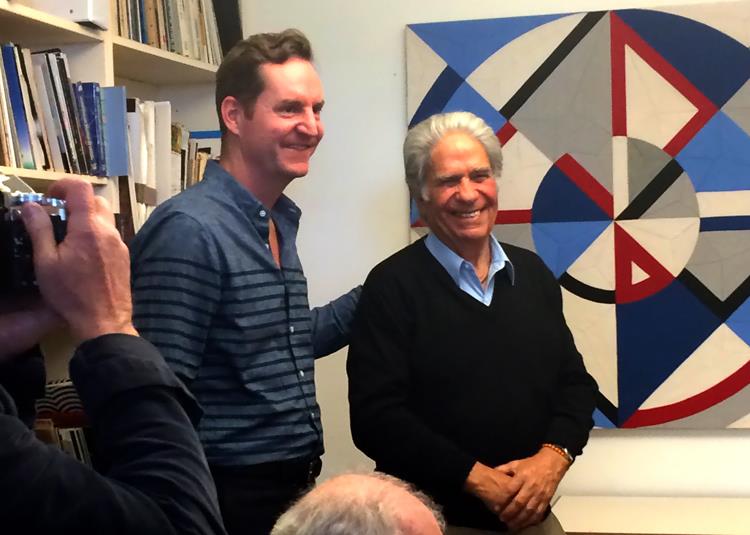 One thing I see when I am hiring people, especially for entry-level positions or fellowships, is that the competition is really fierce and a lot of people have the same degrees. I often look to see what self-directed work the candidate has done in their field, where they are showing that they are trying to take control of their destiny and make things happen rather than waiting for an opportunity to fall into their lap. I guess I base that on what I was able to do to make myself stand out but it also bespeaks a desire and commitment that makes me want to hire them.
One thing I see when I am hiring people, especially for entry-level positions or fellowships, is that the competition is really fierce and a lot of people have the same degrees. I often look to see what self-directed work the candidate has done in their field, where they are showing that they are trying to take control of their destiny and make things happen rather than waiting for an opportunity to fall into their lap. I guess I base that on what I was able to do to make myself stand out but it also bespeaks a desire and commitment that makes me want to hire them.
Do you have any advice for graduate students as they explore career options and/or do job interviews?
I think sensing someone's passion and curiosity is a very persuasive thing to find in an interview and having a broad world-view that shows you are a well-rounded person. Read the newspaper every day! Or better yet, multiple newspapers!
How do you think your doctoral studies prepared you for your non-academic career? What skills, knowledge, and education gained in graduate school have helped you throughout your career?
When I started at MOCA, I was the only person in the whole building with a Ph.D. It seemed like overkill, but it did help my resume stand out. When I went to the Seattle Art Museum, a few curators had Ph.D.'s, but it was still unusual, and when I came to the MCA I was again the only person in the whole building with a Ph.D., but that has since changed and now there are several people here with them. The field is changing and the competition is such that a Ph.D. helps you to stand out in a sea of M.A.s. We have Ph.D.s here at the MCA who edit books and who devise interpretation strategies and who do archival research, so there are jobs beyond curating where it is applicable. I know that all that time I spent in the stacks, which only a Ph.D. can provide, has given me a breadth and depth of knowledge that can't be matched by an M.A. in museum studies.
Do you have any suggestions for the UCSB educational system (or universities in general) on how to better prepare our grad students for careers?
I haven't been too close to the university system in a long time, but I do sense that the attitude that Ph.D.s were only to pursue academic work has loosened considerably. I felt I had to keep my museum interests as a dirty little secret. I'm sure a lot of that has to do with the changing nature of tenure and employment in academia and the growing number of grads who want to put their degrees to use. I think being open to the various applications of a grad degree is something that would be good for universities to consider and would ultimately lead to a wider impact for their respective fields.
What do you consider to be your biggest accomplishments and/or something you are the most proud of professionally and personally?
Personally, it is being a father; professionally, it may be the Isa "Genzken Retrospective" I organized for the MCA and with MOMA New York and the Dallas Museum of Art, or the "Target Practice: Painting Under Attack 1949-78" exhibition I did at the Seattle Art Museum.
You were written about a lot when you secured the Bowie exhibition (which ran through January 4, 2015). Can you briefly discuss this and how it came about?
We just hit it at the right time, and picked the right project. I heard about it and contacted the V&A [Victoria and Albert Museum] in London and as it turned out we were the first American museum to approach them and they didn't have much of a tour at all. I negotiated that we would be the first American venue and it turned out we were the only American venue and then our team here made the most of that. It looked like a big coup but it was a pretty banal transaction. It ended up being the most well-attended show in MCA history, drawing 200,000 people.
Who has been and/or is a hero, mentor, role model, or inspiration to you?
I have had a lot of great female curator role models that have given me big breaks in my career, including Josine Ianco-Starrels for my first internship, Elizabeth Smith for giving me a chance at MOCA, Mimi Gates for hiring me in Seattle, and then Madeleine Grynsztejn for tapping me to come to the MCA. All have been enormously influential on me. Paul Schimmel at MOCA is another one, however, who I learned a lot from and who I think about a lot as an example.
What do you do for fun and relaxation?
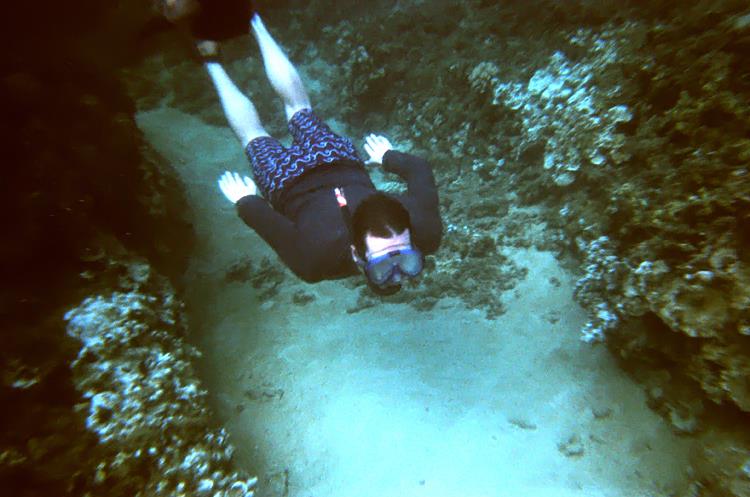 I love the water, and here in the Chicago area love to go to the beach at Lake Michigan. I have been trying to sail on the lake as much as possible. I also like food a lot and exploring new restaurants and cuisines. I do both with my kids, which is a lot of fun.
I love the water, and here in the Chicago area love to go to the beach at Lake Michigan. I have been trying to sail on the lake as much as possible. I also like food a lot and exploring new restaurants and cuisines. I do both with my kids, which is a lot of fun.
What is something very few people know about you or that would surprise people about you?
That I have a secret passion and growing knowledge about vintage Italian sports cars, even though I don't own one myself.
What's on your bucket list of things to do that you haven't done?
I'd like to check off more countries in the world to travel to. Travel is one of my favorite things. ... On a quick count, I think I have been to 22 countries. Strangely, I have never been to Portugal, which I would like to see, and I think it is about time I find a way to visit South Korea, India, and Vietnam.
***
More on Dr. Michael Darling:
Fear No Art Chicago's video interview with Dr. Michael Darling, 2011
Q&A: Michael Darling talks about curating "David Bowie Is," TimeOut Chicago